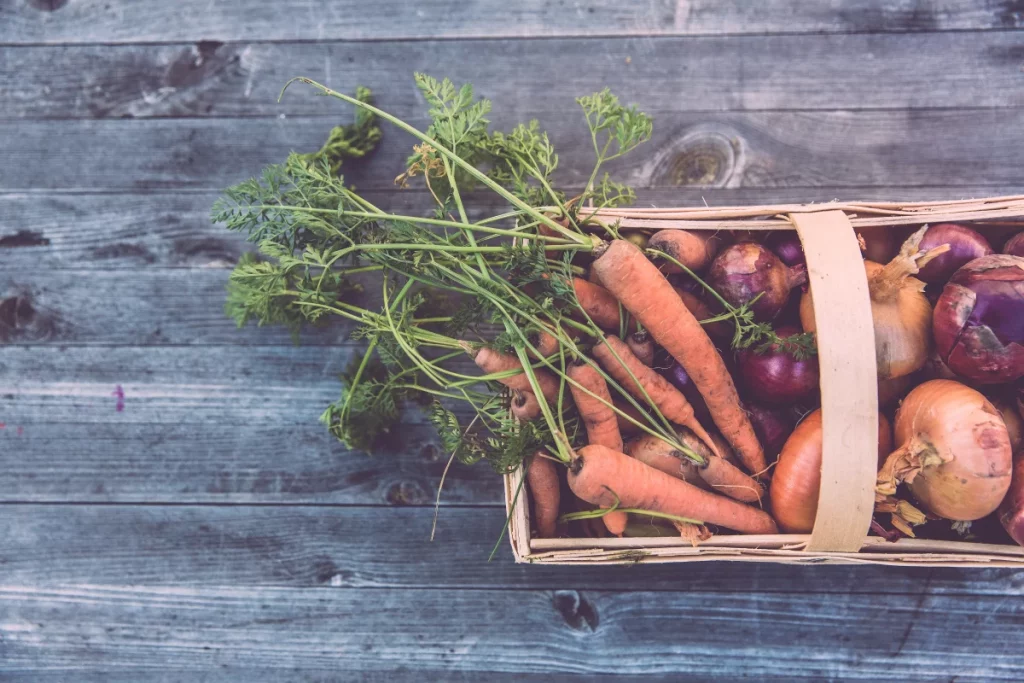Gardening Basics for Sustainable Living
Note: There are affiliate links on this page. Please reference my Affiliate Disclosure page for more details.

Gardening and growing your own food is a responsible ‘adulting’ activity because it encompasses elements of self-sufficiency, sustainability, financial responsibility, and a commitment to health and well-being. It’s a great way to practice long-term planning, community involvement, cooperation, and resilience. Plus you get to EAT what you grow!
If you have a green thumb and a passion for growing your own food, greenhouse gardening is a fantastic option. Not only does it allow you to extend the growing season and protect your plants from harsh weather, but it also provides a controlled environment for optimal growth. Here are some gardening basics to help you get started:
Choose the Right Greenhouse:
Before you start, it’s important to pick the right greenhouse for your needs. Apart from size, there are lots of other factors to consider, like construction materials (aluminum or galvanized steel frame), (glass or polycarbonate panels), panel transparency, roof panel venting, and drainage. Do you want to build a base for it, or have it sit directly on the ground? Will you be carrying plants in, or need room for a wheelbarrow? You’ll also need to determine how much space you have available and what types of plants you want to grow. Finally, think about the amount of sunlight your chosen location receives and if you’ll need supplemental heating or cooling. Here are a few top rated greenhouses on the market.
Gardening Basics Steps
Prepare the Soil
Good soil is the foundation for a successful garden. Start by removing any weeds or debris from the greenhouse floor. Then, test the pH level of the soil to ensure it’s suitable for the plants you intend to grow. Make any necessary amendments, such as adding compost or organic matter, to improve the soil’s fertility and drainage.
Choose the Right Plants:
Selecting the right plants for your greenhouse is crucial. Consider the amount of space available, the temperature requirements, and the amount of sunlight your greenhouse receives. Growing food in a greenhouse allows you to extend your growing season, protect plants from harsh weather, and create a controlled environment for optimal growth, but it still makes a difference which plants you choose. The most popular are:
- Tomatoes: Tomatoes thrive in a greenhouse, and you can grow a wide variety of types, from cherry tomatoes to beefsteak varieties.
- Cucumbers: Cucumbers benefit from the warmth and humidity of a greenhouse and can be trained to grow vertically for space efficiency.
- Peppers: Bell peppers, chili peppers, and sweet peppers do well in a greenhouse, and you can control the temperature to achieve your desired spiciness.
- Many herbs, such as basil, cilantro, parsley, and mint, grow exceptionally well in a greenhouse. They can be used for culinary purposes or for making teas.
- Lettuce and other leafy greens: Leafy greens like spinach, kale, and lettuce can be grown year-round in a greenhouse, providing a continuous supply of fresh, nutritious greens.
- Microgreens: These are young, tender greens harvested at an early stage. They are packed with flavor and nutrients and grow well in small spaces.
- Growing strawberries in a greenhouse can extend the growing season and protect the fruit from pests and disease.
- Radishes have a quick growth cycle and are well-suited for greenhouse gardening.
- Beans: Bush beans and pole beans can be grown in a greenhouse and produce a bountiful harvest.
- Zucchini and squash: These heat-loving plants can thrive in a greenhouse, especially in cooler climates.
- Cilantro can be sensitive to heat and bolts quickly in direct sunlight, so a greenhouse can provide the ideal conditions for a steady supply.
- Eggplants require warm temperatures, making them suitable for greenhouse cultivation.
- Melons: Cantaloupes, watermelons, and other melons can be grown vertically in a greenhouse, maximizing space.
- Beets are a versatile root crop that can thrive in a greenhouse environment.

Control Temperature and Humidity:
Maintaining the proper temperature and humidity levels is essential for plant growth. Most plants prefer temperatures between 65-75°F (18-24°C) during the day and slightly cooler temperatures at night. Invest in a thermometer and a hygrometer (measures humidity) or a combination unit to monitor these conditions regularly. Utilize fans, vents, and shade cloths to regulate the temperature, and consider using a misting system or humidifier to maintain the desired humidity levels.
Provide Adequate Lighting:
While greenhouses are designed to maximize sunlight, it’s important to ensure your plants receive enough light for healthy growth. If your greenhouse doesn’t receive sufficient natural light, consider installing supplemental lighting systems, such as fluorescent or LED grow lights, to provide the necessary light spectrum for optimal plant growth.
Water and Fertilize Properly:
Proper watering and fertilization are essential for healthy plants. Monitor the moisture levels in the soil and water accordingly, keeping in mind that plants in a greenhouse may require more frequent watering due to the controlled environment. Additionally, provide a balanced fertilizer to ensure your plants receive the necessary nutrients for growth.
Pest and Disease Management:
Greenhouses can provide a protected environment for plants, but they can also attract pests and diseases. Regularly inspect your plants for any signs of pests or diseases, and take prompt action to control and manage them. Consider using organic pest control methods, such as introducing beneficial insects or using neem oil, to minimize the use of chemicals.

Harvest and Enjoy!
Finally, the most rewarding part of greenhouse gardening is harvesting your own homegrown produce. As your plants mature, harvest them at their peak ripeness. Enjoy the fresh flavors and nutritional benefits of your hard work and dedication!
If your greenhouse is large enough, consider using raised beds, containers, or hydroponic systems to make the most of the space. Gardening in a greenhouse can be a fulfilling and rewarding experience. By following these basics, you’ll be well on your way to growing your own food and enjoying the benefits of sustainable living. Happy gardening!

Read Next: Budgeting Basics



